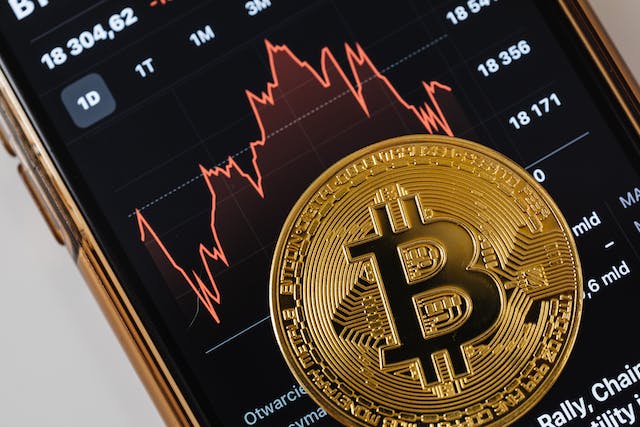In a world where digital currencies are becoming increasingly important, Bitcoin remains one of the most exciting topics in finance. Despite continued market volatility, the value of Bitcoin continues to rise. This phenomenon raises questions about the fundamental factors contributing to the continued upward trend. In this article, we explore the various aspects that affect Bitcoin’s value and provide insight into why this cryptocurrency continues to thrive in an uncertain economic environment.
The appeal of digital scarcity
Bitcoin becomes scarce due to its limited supply. This concept of digital scarcity is similar to that of precious metals such as gold. Like gold, Bitcoin is considered a store of value, especially during times of economic uncertainty. The fixed limit of 21 million coins contributes to the perception that Bitcoin has a value comparable to a rare work of art or a unique gem.
This scarcity also stimulates demand. As more people become aware of Bitcoin’s limited availability, interest in investing before all the coins are mined is growing. This increases competition among potential buyers, contributing to higher prices.
Moreover, the halving of rewards for Bitcoin mining, which occurs every four years, puts additional pressure on supply. These events have historically led to significant price increases as supply becomes more limited due to the reduced flow of new coins.
adoption and acceptance
Increasing Bitcoin adoption by both retail and institutional investors plays a significant role in Bitcoin’s rise in value. Bitcoin is becoming increasingly accepted as a legitimate investment option, just like stocks and bonds. This change in perception has led to an increase in Bitcoin investments and further increased demand.
For example, no-registration casino platforms that offer anonymous online gambling services often accept Bitcoin. This adoption by online platforms shows how Bitcoin’s utility is increasing and adding to its value across industries.
Additionally, an increasing number of large corporations and financial institutions are investing in Bitcoin, which is a sign of trust in the cryptocurrency. This institutional adoption not only contributes to increased demand, but also strengthens Bitcoin’s credibility as a stable investment.
Technological innovation and security
Bitcoin’s underlying blockchain technology is a major factor in the rise in Bitcoin’s value. Blockchain offers a high level of transparency, security, and immutability, making it attractive to investors looking for a safe and transparent way to invest their funds.
The constant advancement and improvement of Bitcoin technology also increases its attractiveness. Developers are constantly working to improve the network, including transaction speed and efficiency. These technological advancements not only make Bitcoin more useful, but also more valuable.
Additionally, the security of blockchain, with its distributed and immutable ledger, provides a level of security that traditional financial systems struggle to match. These security aspects are attracting the attention of investors who are looking for ways to protect their assets from fraud and cyberattacks.
macroeconomic factors
Global macroeconomic factors also play an important role in the rise in value of Bitcoin. In times of economic uncertainty, such as the COVID-19 pandemic, investors look for safe havens to protect their funds. Bitcoin, often referred to as “digital gold,” is an attractive alternative investment in these times.
Inflation, especially in countries with weak currencies, increases demand for Bitcoin. People are looking for ways to preserve purchasing power and are using Bitcoin as a hedge against inflation. This is especially true in countries where trust in the national currency and financial system is low.
Moreover, the monetary policy decisions of major central banks, such as the US Federal Reserve (Fed), affect the value of traditional currencies and the attractiveness of Bitcoin. In response to quantitative easing measures and low interest rates, investors are looking for alternatives with potentially higher returns, such as Bitcoin.
Social and Cultural Dynamics
Social and cultural perceptions of Bitcoin have a significant impact on its value. As mainstream interest and acceptance of cryptocurrencies in general increases, so does awareness and interest in Bitcoin. Media attention and public debate contribute to a self-reinforcing effect where more attention leads to more interest and investment.
Bitcoin’s role as a symbol of technological progress and financial innovation is especially attractive to younger generations. This generation, comfortable with digital technology and often skeptical of traditional financial institutions, tends to invest in Bitcoin.
The influence of prominent figures and influential people in the cryptocurrency world cannot be ignored. The statements and actions of well-known entrepreneurs and investors can cause significant market movements, whether positive or negative. These social factors not only contribute to volatility, but also to the long-term rise in value of Bitcoin.
conclusion
Bitcoin remains a fascinating and dynamic part of the modern financial world. A combination of digital shortages, increased adoption, technological innovation, macroeconomic factors and social dynamics contribute to continued appreciation in valuations despite market volatility. Although the future of Bitcoin remains uncertain, it is clear that this cryptocurrency is having a lasting impact on the way we think about money and investing.

